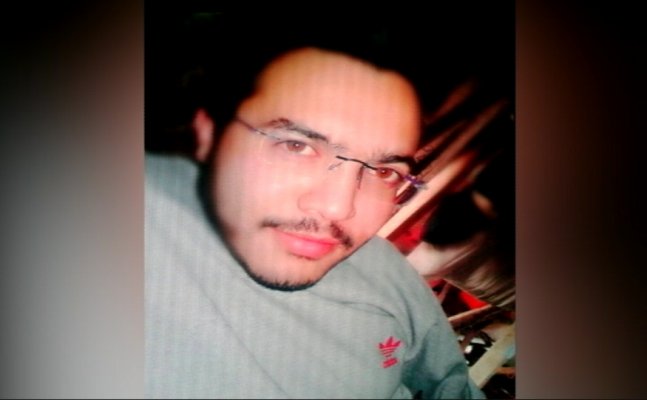Before the deadly dawn of Oct 28, 2015 would silence one of the mysterious militant chiefs of Kashmir, South Asia’s most active militant outfit, Lashkar-e-Taiba (or the Army of the Good) had their replacement ready in the form of Abu Dujana.
That Gilgit boy had barely grown his moustaches when he walked into Kashmir as a 17-year-old jihadist.
Some ten years down the line, when counter-insurgents finally sealed his fate in dusky Hakripora hamlet of Pulwama along with his brother in arms, Dujana had become a master strategist, whose mettle lied in rattle strategy.
Behind his decade-long stint was his unwritten insurgent rule—no schooling, no firearms and no frequent consultations—for one reason: He didn’t want to be compromised.
Dujana, like his master Abu Qasim was a hardcore Pak-trained militant who stuck to conventional guerrilla warfare rather than broadcasting his militant methods on social media. Perhaps that’s why the likes of Omar Abdullah or for that matter, the entire security grid don’t see Burhan’s shades in Dujana to “recruit in to militancy from the grave”.
In Charismatic Commander Burhan Wani’s case, that ability “far outstripped anything he could have done on social media.” But then, there’s a caution: It’s too early to write off the impact of someone, who, as a fierce fighter had inflicted maximum damage on the security apparatus in Kashmir.

“Dujana was a model militant: well-trained, having mastery in mounting sudden attacks on security forces and a knack for laying low to focus on operations,” says a top police official who was after him. But the officer downplays Dujana’s ripple-effect in the valley at par with Burhan Wani.
“The fact that Dujana was no social media militant makes him a lesser martyr for public imaginations. But yes, none could deny his mastery as a militant.” But there is something else making him different from his tribe: his survival tactics.
Perhaps never in Kashmir’s insurgency history, did a militant attain a phoenix-like stature as Abu Dujana did. Every time the government gunners claimed to have killed him, he literally reemerged from his ‘grave’ and became a master of deception.
Word has it that he circulated a rumour of his own killing during a south Kashmir gunfight. He even surprised the forces when he managed to flee from back-to-back encounter sites. At one point in time, says a local intelligence officer, a sense prevailed in the security establishment that this Lashkar’s top gun is way ahead of them in combat games.
Dujana, in fact, stood vindicated when police intercepted a Maruti Alto he was travelling in earlier this year in Pulwama – only to be left high and dry. Somehow, he had got the inkling about a trap laid for him and managed to escape, leaving behind his personal iPhone, later dispatched to California after the agencies couldn’t unlock it.
But the “master of deceit” was finally trounced on Tuesday morning, when he fell to the meticulous military intelligence. The killing described as a “huge achievement” by the J&K Police’s twitter handle has ended the nine years dream run of the militant largely operating out of Pulwama.
His rise was meteoric.

Dujana made his first appearance in 2014 during the funeral of a local Lashkar militant in Kakpora, Pulwama. Two years later, at another funeral, he was calling upon the locals to take the fight to the Indian army: “Lift up your guns and fight against the Indian army.” Along with Sabzar Bhat and Zakir Musa, he was spotted at Burhan Wani’s funeral last summer.
The 27-year-old slain commander was at the heart of fierce militant strikes in South Kashmir. After being schooled by his master—who mounted a deadly attack on an army convoy at Hyderpora along with his associate Irshad Ganai—Dujana made the highway a death trap for the forces.
He was a part of the Qasim-led group that opened fire at an Army convoy near the prominent Silver Star hotel in the city outskirts on October 19, 2012. He went on to mastermind the Udhampur attack besides the Pampore ambush in which 8 CRPF personnel were killed.
Dujana’s militant methods made him Qasim’s lieutenant—“gifted with mind, muscle and madness”—in his 20-young insurgent team. He eventually became a major headache for the security grid and went on to carry over three dozen attacks on the forces. It was no wonder then why he figured number 1 in Indian Army’s latest hit-list of the 12 most-wanted active militants in Kashmir. Tagged as an A++ militant, Dujana was a prized-scalp carrying Rs 15 lakh bounty on his head.
But a few months ago, he was disarmed by the Lashkar, following a rift within the ranks of the outfit founded by Hafiz Saeed and Co. in the war-torn Afghanistan at the peak of Soviet war in 1987.
He was reportedly replaced by Abu Ismail, named in the recent Amarnath attack. Dujana had joined ex-Hizb commander Zakir Musa who recently broke away from the militant outfit and was named chief of its cell in Kashmir by Al-Qaeda.
Dujana’s departure has already sent triumphant signals from Srinagar to Delhi power corridors. But his ferocity as the combat-hardened insurgent is being hailed even by his nemesis.
“In his passage, the militant warfare in Kashmir won’t be the same,” says a counter-insurgent.
“It takes time for any militant tanzeem to raise somebody like Dujana, who was one of the longest surviving foreign militants in Kashmir. It’s big feat for all of us!”










